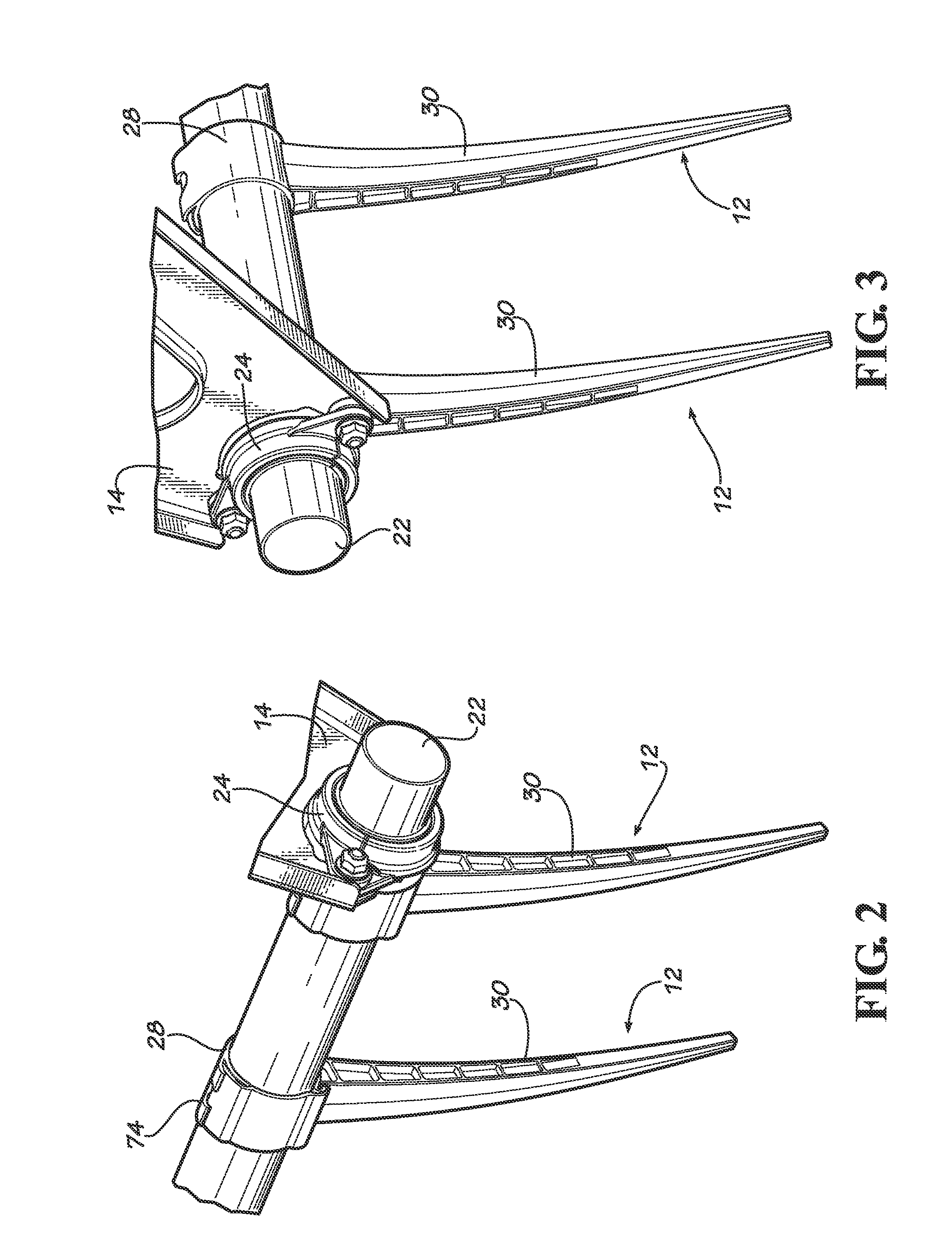Clip on Reel Tine
a clip and reel technology, applied in the field of harvesting machines, can solve the problems of difficult to find an appropriate standard size screw, difficult to tighten the screw, and difficulty in fixing the screw, so as to prevent accidental unlocking of the clip, quick and easy installation or removal
- Summary
- Abstract
- Description
- Claims
- Application Information
AI Technical Summary
Benefits of technology
Problems solved by technology
Method used
Image
Examples
Embodiment Construction
[0016]The present invention is susceptible of embodiment in many different forms. While the drawings illustrate, and the specification describes, certain preferred embodiments of the invention, it is to be understood that such disclosure is by way of example only. There is no intent to limit the principles of the present invention to the particular disclosed embodiments. Directional references such as “left” and “right” in this specification are given as if the machine were being viewed from the rear looking forwardly.
[0017]FIG. 1 shows a harvesting reel 10 of typical construction, with the exception of the tines 12 that are constructed in accordance with the principles of the present invention. Reel 10 has a pair of large, star-shaped and longitudinally spaced apart plates 14 and 16 at opposite ends of the reel, as well as a center, cylindrical tube 18 that interconnects plates 14 and 16 in concentric relationship therewith. Plates 14, 16 are secured to central tube 18 for rotation...
PUM
 Login to View More
Login to View More Abstract
Description
Claims
Application Information
 Login to View More
Login to View More - R&D
- Intellectual Property
- Life Sciences
- Materials
- Tech Scout
- Unparalleled Data Quality
- Higher Quality Content
- 60% Fewer Hallucinations
Browse by: Latest US Patents, China's latest patents, Technical Efficacy Thesaurus, Application Domain, Technology Topic, Popular Technical Reports.
© 2025 PatSnap. All rights reserved.Legal|Privacy policy|Modern Slavery Act Transparency Statement|Sitemap|About US| Contact US: help@patsnap.com



